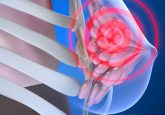Elevated expression of a pharmacologic Polycomb signature predicts poor prognosis in gastric and breast cancer

Aim: Polycomb Group complexes are epigenetic repressors that silence tumor suppressive genes. Studies demonstrated that pharmacologic inhibition of Polycomb Group complexes with 3-deazaneplanocin A (DZNeP) induces cancer cell death by re-expressing silenced genes. Here we evaluate the prognostic significance of DZNeP target genes in gastric and breast cancer. Patients & methods/materials: The prognostic impact of a DZNeP-regulated gene signature was investigated using the KM Plotter and cBio Portal resources containing microarray data from tumor tissue. Results: We report that elevated expression of DZNeP targets is associated with poor clinical outcome in gastric and breast cancer. In gastric cancer, elevated expression of DZNeP signature is inversely correlated with decreased overall survival. In breast cancer, DZNeP signature predicted poor prognosis in HER2+ tumors but not in HER2– neoplasms. Conclusion: These findings demonstrate that DZNeP target genes are not predictive of better but rather of poor clinical outcome in gastric and breast cancer.
For many years cancer has been described as a genetic disease resulting from a series of DNA mutations [1]. However, it has become widely accepted that epigenetic alterations that do not alter DNA sequence can also drive cancer initiation and progression in concert with genetic alterations [2,3]. This paradigm shift has generated considerable interest in exploring the cancer epigenome in the search for clinical tools to diagnose, classify and treat human tumors [4]. Notably, extensive evidence has demonstrated that a group of epigenetic regulators called the Polycomb Group (PcG) proteins play critical roles in human cancer and may be exploited clinically [5,6]. PcG proteins assemble in two main Polycomb Repressive Complexes (PRC1 and PRC2) known to silence key tumor suppressor genes, thereby contributing to tumorigenesis and metastasic dissemination [7].
Click here to read the full article in Epigenomics.




